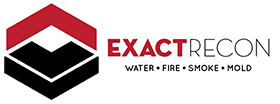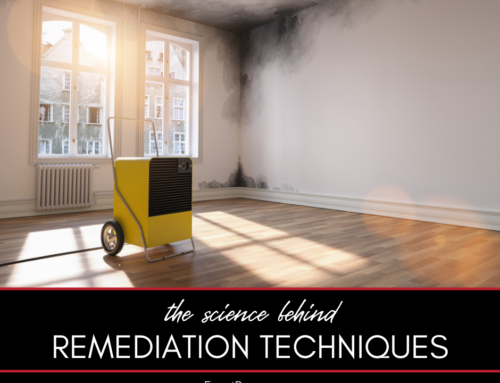Understanding the science of mold is essential in identifying and eliminating it from our indoor environments. Knowledge of how mold grows and spreads can significantly aid in effectively managing these common but potentially harmful household hazards.
The Science of Mold: Identifying and Eliminating Indoor Hazards
This guide explains the following:
- What is mold and how does it grow?
- Identifying signs of mold in your home
- Health risks associated with indoor mold
- Effective methods for mold removal
- Preventing mold growth in your home
- When to call in professional mold remediation
Here’s a closer look at each.
What is Mold and How Does it Grow?
Mold is a type of fungus that thrives in moist environments. It reproduces through tiny spores that travel through the air. When these spores land on damp surfaces, they can grow and spread.
Related: Disaster remediation in Michigan
Identifying Signs of Mold in Your Home
Common signs of mold include visible growths, a musty smell, or water damage. Mold can grow on a variety of materials, including wood, paper, carpet, and food.
Health Risks Associated with Indoor Mold
Exposure to mold can lead to health issues, especially for those with allergies, asthma, or compromised immune systems. Symptoms can include coughing, sneezing, throat irritation, and in severe cases, respiratory infections.
Effective Methods for Mold Removal
Small areas of mold can often be cleaned with household cleaning products. However, for larger infestations or mold in HVAC systems, professional remediation may be necessary.
Preventing Mold Growth in Your Home
Preventing mold involves controlling moisture levels, ensuring good ventilation, fixing leaks promptly, and keeping the home clean and dry. Regular inspections can also help catch mold growth early.
Related: How to prepare your home for Michigan’s extreme weather
When to Call in Professional Mold Remediation
Professional assistance is recommended when mold covers a large area, is in the HVAC system, or if you have health concerns that make mold removal risky for you.
FAQ About Mold Science and Elimination
Check out these commonly asked questions about the science of mold and how to eliminate it from indoor environments. If you have more questions, please feel free to call us for help.
How Can I Tell if It’s Mold or Just Dirt?
Mold typically appears as a patch of discoloration that can be fuzzy or slimy. Unlike dirt, mold also often comes with a musty odor.
Are There Different Types of Mold?
Yes, there are many types of mold, and they can appear in different colors, including black, green, white, or orange. Some types of mold are more harmful than others.
Can Mold Grow in My HVAC System?
Yes, mold can grow in HVAC systems, especially in parts where moisture accumulates. Regular HVAC maintenance is important to prevent this.
Related: Can insurance cover storm damage?
Is It Safe to Remove Mold Myself?
For small, contained areas, it might be safe to remove mold yourself using proper safety gear and cleaning agents. However, for larger infestations, professional help is advised.
How Do Professionals Remove Mold?
Professionals use advanced techniques and equipment to safely remove mold, including air filtration devices, antimicrobial agents, and protective gear.
Related: Jackson County disaster relief resources
Understanding the science of mold is crucial in effectively identifying and eliminating this common indoor hazard. By recognizing the signs of mold, taking the right steps to remove it, and implementing preventive measures, you can maintain a healthier and safer home environment. In cases of extensive mold growth, it’s always best to consult with professional remediation services to ensure thorough and safe removal.
Do You Need a Disaster Remediation Expert in Washtenaw County or Jackson County?
If your home has already been damaged, we can help. Check out our services and call 734-352-9183 for your free disaster remediation quote today. We offer:
- Water damage restoration
- Fire damage restoration
- Mold removal and remediation
- Fire and smoke restoration
- Sewer cleanup and disinfecting
- Reconstruction
- Wind and storm damage repair









